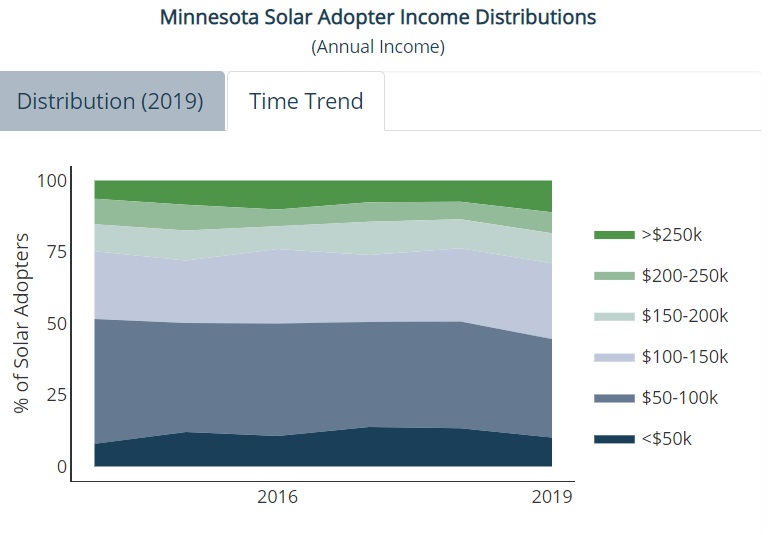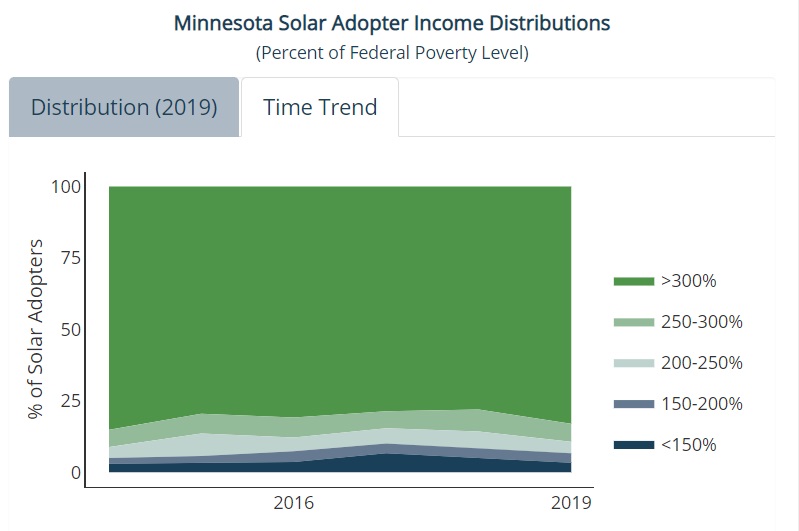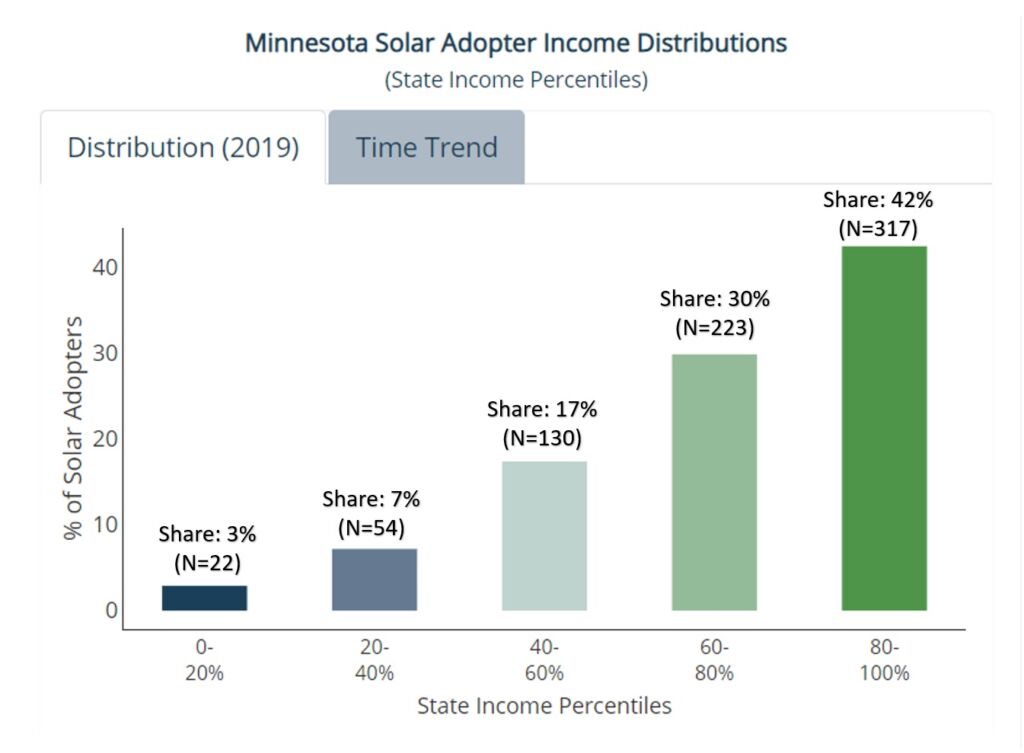Most Minnesota households with rooftop solar make over $100,000
A recent report published by Lawrence Berkeley Labs (LBL) examining the income demographics of solar panel owners found that most households with solar panels on their roofs in Minnesota make over $100,000 per year.
According to the Solar Demographics Tool from LBL, 11 percent of rooftop solar households make more than $250,000 per year, 7 percent make between $200,000 and $250,000, 10 percent make between $150,000 and $200,000, 26 percent make between $100,000 and $150,000, 34 percent make between $50,000 and $100,000, and just 10 percent make less than $50,000, as you can see in the figure below.

Examining the time trend, we see that the share of solar adopters making less than $50,000 per year has increased from about 7.9 percent in 2014 to 10.1 percent in 2019. In 2019, 44.4 percent of solar adopters made more than $150,000 per year, while lower-income demographics experienced a decline in installations.

LBLs data gets even more granular, showing the percentage of homes with rooftop solar compared to the households percent of the federal poverty level. The graph shows 83 percent of households with rooftop solar made 300 percent more than the federal poverty level in 2019, whereas just 3.4 percent of solar adopters made less than 150 percent of the federal poverty level.

The data are even more striking when we look at rooftop solar installations as a percentile of state income. The graph below shows the top-20 percent of income earners in Minnesota accounted for 42 percent of solar installations, and the top 40 percent accounted for a whopping 72 percent of solar ownership.

The bottom 20 percent of Minnesota income earners accounted for just 3 percent of homes with rooftop solar. In total, the bottom 40 percent of income-earning households in Minnesota constituted just 10 percent of rooftop solar installations.
This distribution isn’t surprising because solar panels are expensive to install.
However, the distribution is deeply unethical because the adoption of rooftop solar is primarily driven by a policy called net metering, which acts as a wealth transfer from low-income people without solar panels, to richer people with solar panels.
Here’s how it works.
In 2017, the retail residential electricity rate in Minnesota was 13.04 cents per kilowatt-hour (KWh). This means someone with solar panels on their house was paid the full retail cost of 13.04 cents per KWh.
However, the problem with this arrangement is that it means the people with solar panels on their roofs are not paying their fair share to upkeep the rest of the grid, such as generation, employees, transmission, and distribution. These costs are then foisted upon people without solar panels.
While using solar power will reduce the need to burn some fuel, the fuel cost is a tiny part of the total retail price of electricity, as you can see in the picture below.

The cost of coal in Minnesota is about 2 cents per KWh or 15 percent of the retail residential cost of electricity. The remaining 85 percent of the retail cost of electricity goes to keeping coal and natural gas plants online to provide electricity during the 82 percent of the time when the sun isn’t shining enough to produce electricity, paying employees of the electric company, transmission lines, and distribution, etc.
When people with solar panels are paid the full retail price of 13.04 cents per KWh, instead of the 2 cents of avoided fuel costs, they effectively force their neighbors to pay the remaining 11.04 cents per KWh to maintain the grid. Hence the reason all the houses in the neighborhood that don’t have solar panels are so sad in the graphic.
This arrangement is simply wrong because the LBL report proves people with panels are much wealthier than people who don’t have them.
This also means the people who preach the loudest about environmental justice and environmental racism are likely the people who are using rooftop solar panels to pick the pockets of low-income families who can’t afford them. It’s the worst kind of self-righteous hypocrisy imaginable.
In order to promote actual justice, lawmakers in Minnesota should enact reforms to scrap net metering and change the way rooftop solar installations are compensated for the electricity they generate. Rather than getting 13 cents per KWh, rooftop solar owners should be paid for the avoided fuel cost or about 2 cents per KWh.